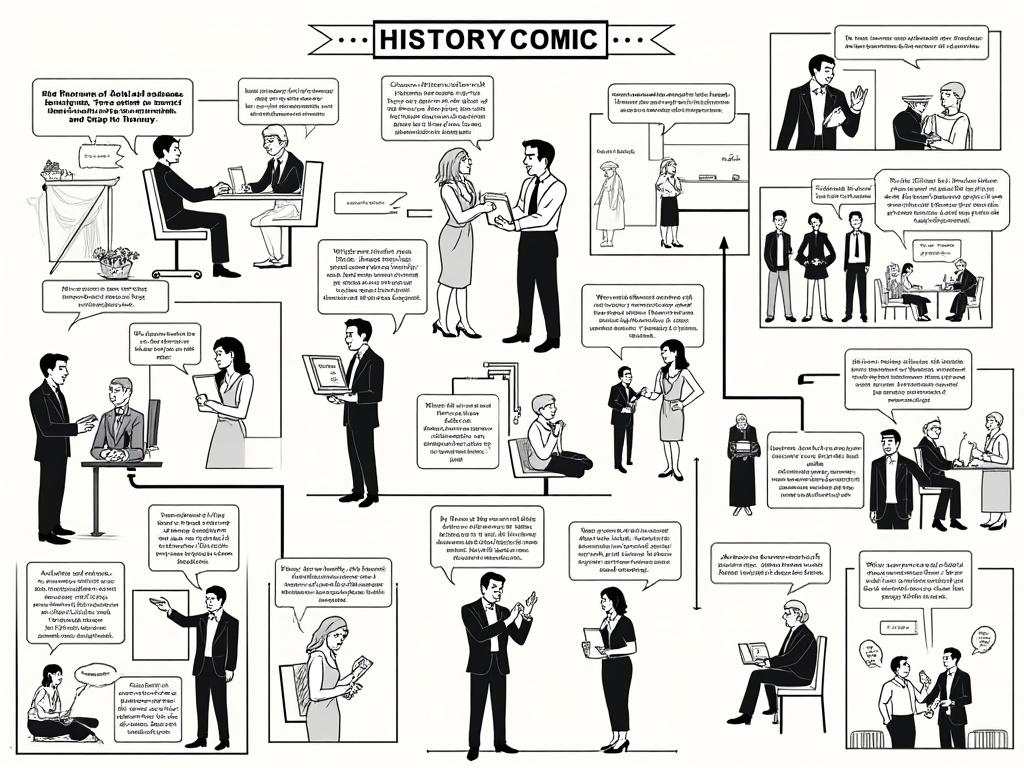
UAE History: From Past to Present – A Journey Through Transformation
Reading time: 12 minutes
Ever wondered how a collection of desert trading posts transformed into one of the world’s most dynamic economies? You’re about to discover the remarkable story of the United Arab Emirates—a nation that rewrote the rules of modern development in just five decades.
Table of Contents
- Ancient Roots: The Foundation Years
- The Pearl Diving Era: Building Maritime Heritage
- Birth of a Nation: The 1971 Union
- Oil Discovery: The Great Transformation
- Modern Diversification: Beyond Oil
- Navigating Challenges and Opportunities
- Your Window into Tomorrow’s UAE
- Frequently Asked Questions
Ancient Roots: The Foundation Years
Let’s start with the straight talk: The UAE’s story begins long before oil was discovered. Archaeological evidence reveals human settlement dating back 125,000 years, with the region serving as a crucial link between Mesopotamian and Indus Valley civilizations.
Strategic Geographic Positioning
Picture this scenario: You’re an ancient trader navigating between Asia and Africa. The Arabian Peninsula’s eastern coast offered something invaluable—natural harbors and freshwater sources. This geographic advantage laid the groundwork for what would become a global trading hub.
The region’s early inhabitants developed sophisticated systems for:
- Water management: Falaj irrigation systems that still function today
- Maritime navigation: Advanced knowledge of monsoon patterns
- Trade networks: Connections spanning from India to East Africa
The Trucial States Period
By the 19th century, British maritime interests led to the establishment of the “Trucial States”—a collection of sheikhdoms under British protection. This period, lasting from 1820 to 1971, created the political framework that would eventually facilitate UAE’s peaceful unification.
The Pearl Diving Era: Building Maritime Heritage
Here’s where the story gets fascinating. Before oil transformed everything, the UAE’s economy depended heavily on pearl diving—an industry that shaped the region’s cultural DNA and business acumen.
The Pearl Industry’s Golden Age
Between 1850 and 1930, pearl diving employed over 70% of the coastal population. This wasn’t just economic activity; it was a comprehensive social system that developed remarkable organizational skills and risk management practices.
Pearl Diving Season Economics Comparison
Case Study: The Al Maktoum Family’s Business Vision
The ruling family of Dubai demonstrated early entrepreneurial thinking by establishing Dubai as a free port in 1894, attracting Persian merchants fleeing taxation. This decision—made during the pearl diving era—established Dubai’s reputation as a business-friendly destination, a principle that continues today.
Birth of a Nation: The 1971 Union
Now here’s the remarkable part: Creating a unified nation from seven independent sheikhdoms required extraordinary diplomatic skill and shared vision. The UAE’s formation on December 2, 1971, stands as one of the most successful peaceful unifications in modern history.
The Founding Fathers’ Strategic Approach
Sheikh Zayed bin Sultan Al Nahyan of Abu Dhabi and Sheikh Rashid bin Saeed Al Maktoum of Dubai recognized that unity would amplify each emirate’s strengths while addressing individual weaknesses.
| Emirate | Primary Strength | Population (1971) | Key Contribution |
|---|---|---|---|
| Abu Dhabi | Oil Resources | 46,000 | Financial Foundation |
| Dubai | Trade Hub | 59,000 | Commercial Expertise |
| Sharjah | Cultural Center | 32,000 | Educational Leadership |
| Northern Emirates | Agricultural/Fishing | 43,000 | Workforce & Resources |
Constitutional Framework
The UAE’s constitution established a unique federal system balancing central authority with emirate autonomy. This framework addressed a critical challenge: How do you unify diverse territories while preserving their individual identities?
The solution involved:
- Revenue sharing: Abu Dhabi contributed 85% of federal budget
- Distributed governance: Each emirate retained control over local affairs
- Rotational leadership: Though Abu Dhabi leads, other emirates hold key federal positions
Oil Discovery: The Great Transformation
Here’s where the UAE story becomes truly extraordinary. Oil discovery in Abu Dhabi in 1958 provided the financial resources, but the leadership’s vision transformed potential into reality.
Strategic Resource Management
Unlike many oil-rich nations, the UAE’s leaders immediately recognized oil as a temporary advantage requiring long-term planning. Sheikh Zayed’s famous quote captures this wisdom: “The oil will run out, but we must build something that will last forever.”
Case Study: The Abu Dhabi Investment Authority (ADIA)
Established in 1976, ADIA became one of the world’s largest sovereign wealth funds, managing over $650 billion in assets. This early investment in global diversification demonstrates the UAE’s sophisticated approach to resource management.
Infrastructure Development Priorities
Quick scenario: Imagine inheriting vast oil wealth in 1970s Arabia. What would you build first? The UAE’s leadership prioritized:
- Transportation networks: Airports, ports, and highways
- Educational institutions: Universities and technical schools
- Healthcare systems: Hospitals and medical research facilities
- Telecommunications: Modern communication infrastructure
Modern Diversification: Beyond Oil
Ready to understand how the UAE transformed from oil dependency to economic diversification? The strategy involved calculated risks and visionary thinking that other nations now study and emulate.
The Dubai Model
Dubai’s transformation illustrates the UAE’s diversification success. With limited oil resources, Dubai focused on becoming a global business hub through strategic initiatives:
- Free zones: Jebel Ali Free Zone became the region’s largest
- Tourism infrastructure: World-class hotels and attractions
- Financial services: Dubai International Financial Centre
- Aviation hub: Emirates Airlines and Dubai International Airport
Innovation and Technology Focus
The UAE’s recent emphasis on innovation addresses future economic challenges. The UAE Strategy 2071 aims to make the UAE the world’s best country by its centennial.
Key Innovation Initiatives:
- Space program: Mars mission and satellite technology
- Renewable energy: Mohammed bin Rashid Al Maktoum Solar Park
- Artificial intelligence: AI Strategy 2031
- Sustainable development: Net-zero emissions by 2050
Navigating Challenges and Opportunities
Let’s address the real challenges the UAE faces and how they’re being tackled. No success story is without obstacles, and understanding these provides insights into the nation’s resilience.
Economic Diversification Challenges
Challenge 1: Balancing Growth with Sustainability
The UAE’s rapid development created environmental concerns. The response? Comprehensive sustainability initiatives including the UAE Green Agenda 2015-2030 and significant renewable energy investments.
Challenge 2: Managing Cultural Diversity
With over 200 nationalities residing in the UAE, maintaining social cohesion while preserving Emirati culture requires careful balance. The solution involves promoting tolerance while celebrating local heritage.
Regional Stability and Diplomacy
The UAE’s foreign policy emphasizes stability and economic cooperation. The Abraham Accords and normalization with Israel demonstrate pragmatic diplomacy prioritizing economic benefits over historical tensions.
Your Window into Tomorrow’s UAE
So what’s next for this remarkable nation? The UAE’s trajectory suggests continued innovation and strategic positioning for future challenges. Here’s why this matters to you, whether you’re an investor, entrepreneur, or simply someone interested in successful development models.
Strategic Roadmap for the Next Decade
1. Become a Global Innovation Hub
- Establish 1,000 digital companies by 2025
- Launch comprehensive AI integration across government services
- Create world-class research and development facilities
2. Achieve Economic Resilience
- Reduce oil dependency to less than 20% of GDP
- Develop advanced manufacturing capabilities
- Strengthen food and water security through technology
3. Lead in Sustainability
- Implement circular economy principles nationwide
- Achieve net-zero carbon emissions by 2050
- Become a global center for clean energy technology
4. Enhance Quality of Life
- Create 75,000 new jobs in emerging sectors
- Establish the world’s most advanced healthcare system
- Develop smart cities with integrated IoT infrastructure
The UAE’s journey from pearling ports to global powerhouse offers valuable lessons in strategic planning, cultural adaptation, and visionary leadership. As the nation approaches its second half-century, its ability to balance tradition with innovation continues to set new standards for national development.
What does this mean for you? Whether you’re considering the UAE as an investment destination, business hub, or simply studying successful development models, the nation’s approach to transformation provides a masterclass in strategic thinking and execution. The question isn’t whether the UAE will continue to innovate—it’s how quickly other nations can adapt similar strategies to their own contexts.
Frequently Asked Questions
How did the UAE achieve such rapid economic development in just 50 years?
The UAE’s success stems from strategic resource management, visionary leadership, and early economic diversification. Rather than relying solely on oil revenues, leaders invested in infrastructure, education, and business-friendly policies that attracted global investment and talent. The federal structure also allowed each emirate to develop its unique strengths while benefiting from collective resources.
What role did cultural tolerance play in the UAE’s development?
Cultural tolerance became a cornerstone of UAE’s growth strategy, enabling the nation to attract a diverse international workforce and businesses. By creating an inclusive environment where over 200 nationalities coexist peacefully, the UAE positioned itself as a global hub for trade, tourism, and talent. This approach transformed potential challenges of diversity into competitive advantages for economic growth.
How sustainable is the UAE’s economic model for the future?
The UAE’s commitment to diversification and innovation suggests strong long-term sustainability. With oil comprising less than 30% of GDP (compared to over 80% in the 1970s), the economy has successfully reduced resource dependency. Current investments in renewable energy, artificial intelligence, and space technology, combined with the UAE Strategy 2071, demonstrate continued evolution toward a knowledge-based, sustainable economy.

Article reviewed by Emma Smith, Fintech Investment Analyst | Bridging Startups & Capital, on June 4, 2025
